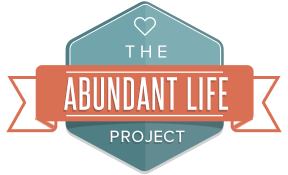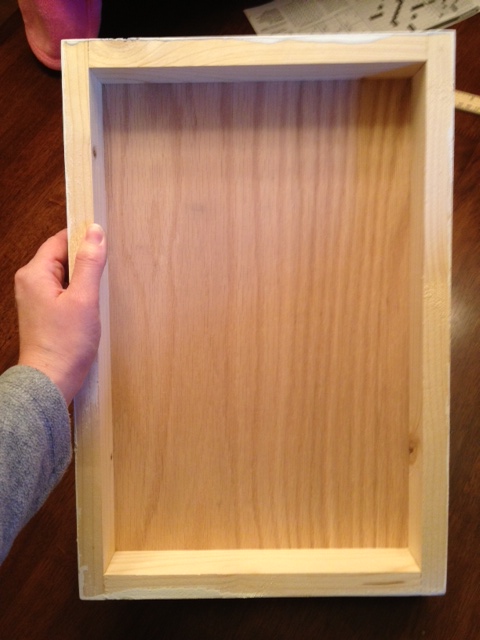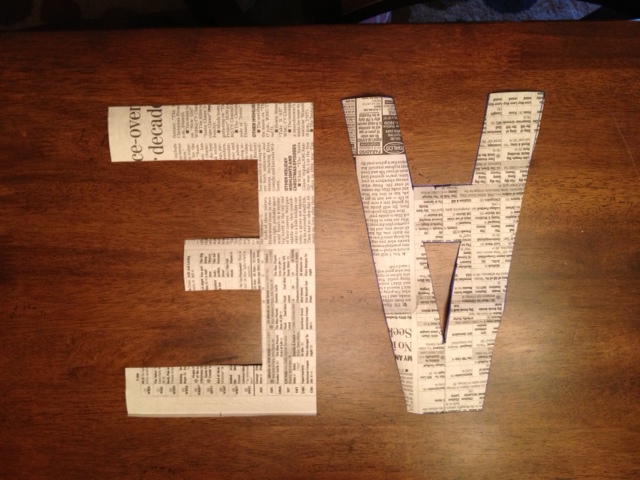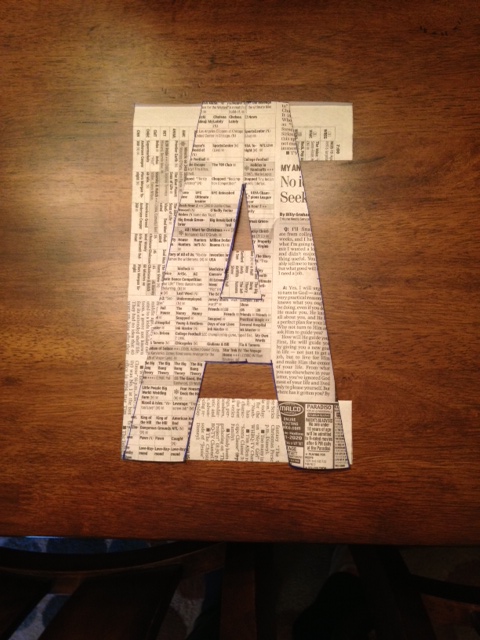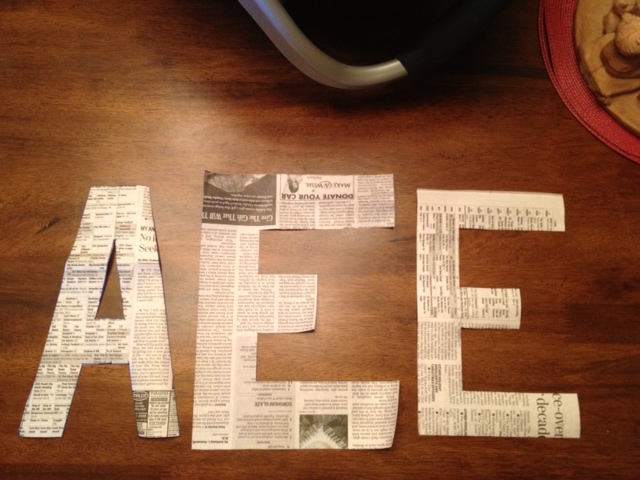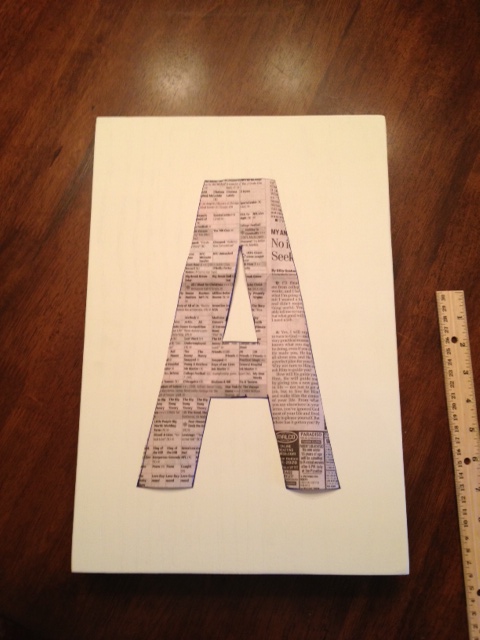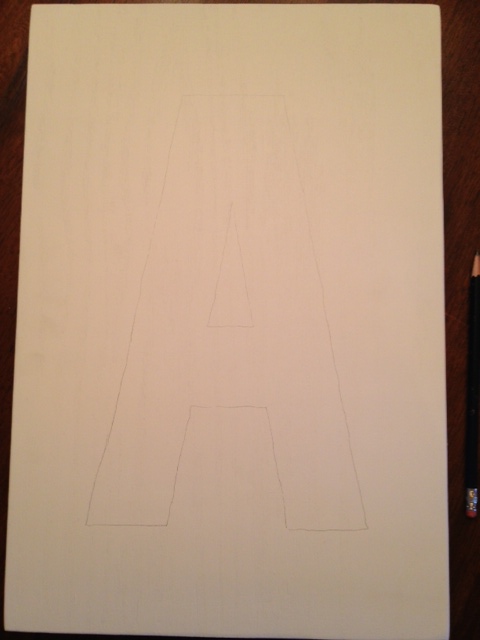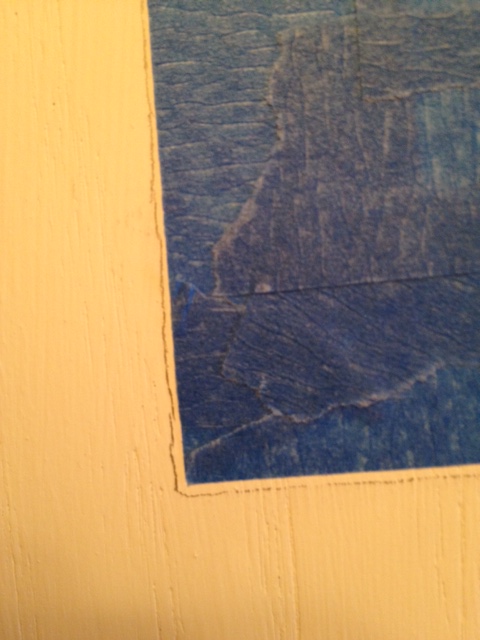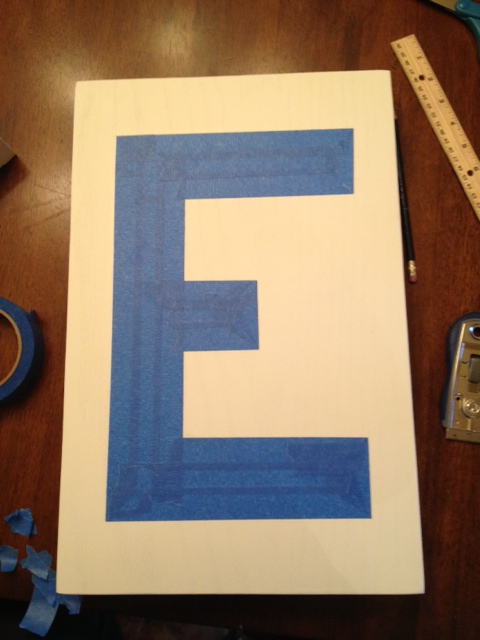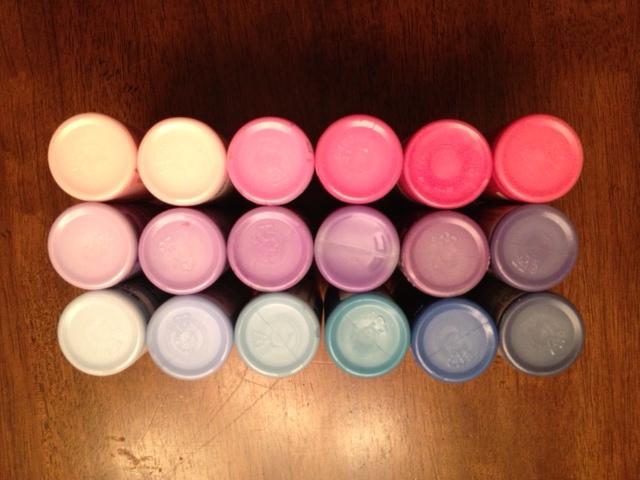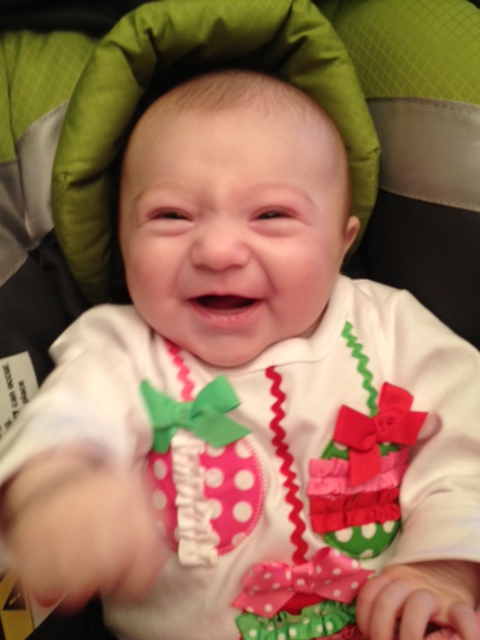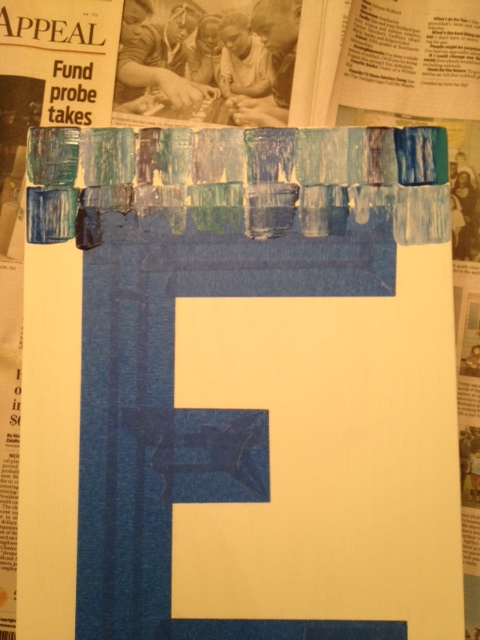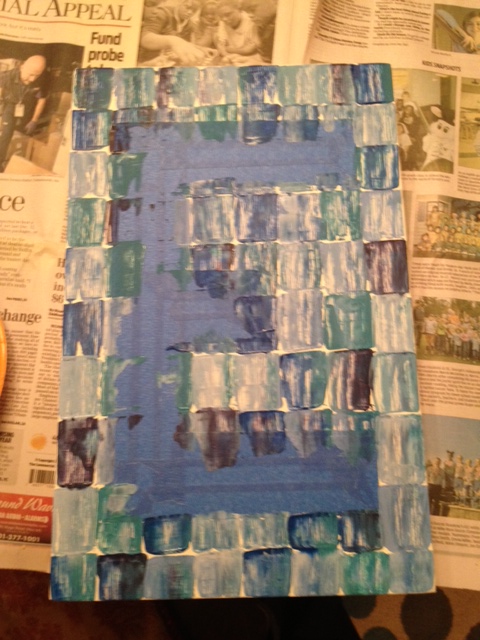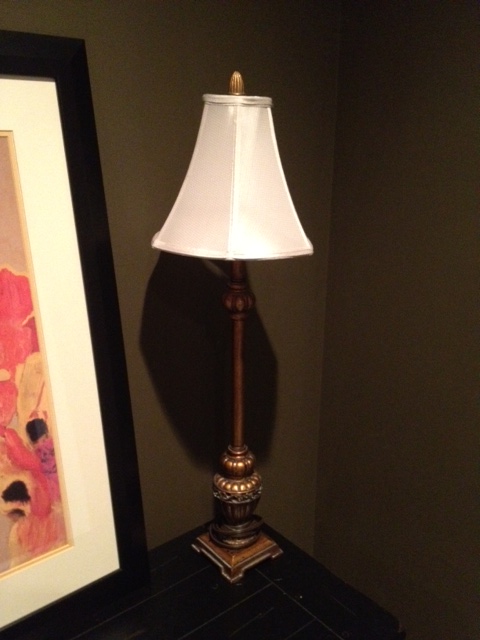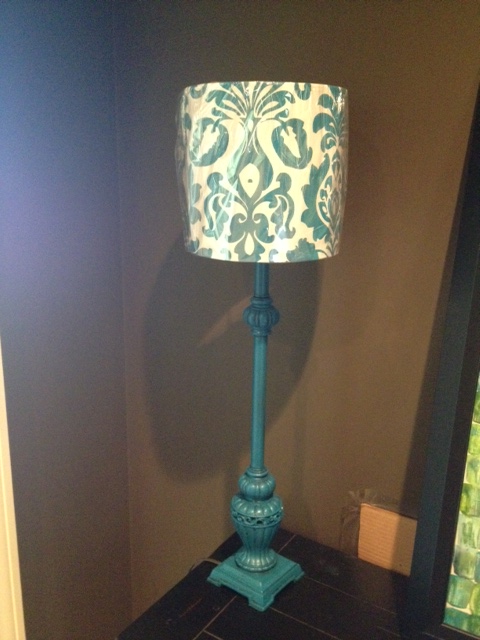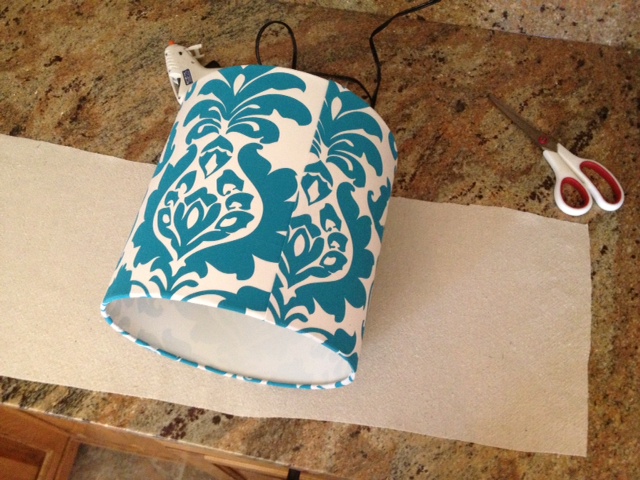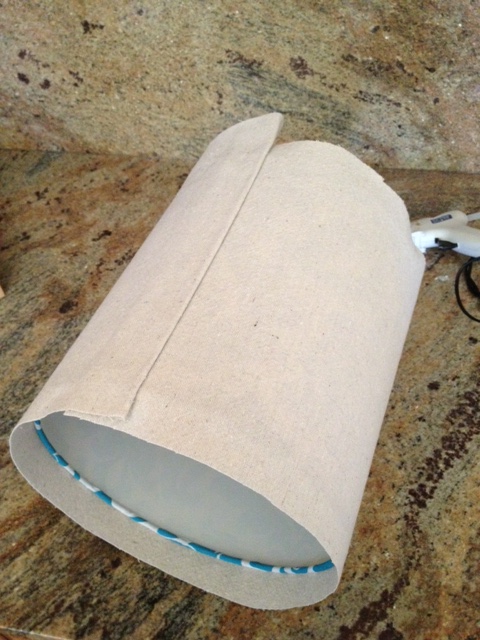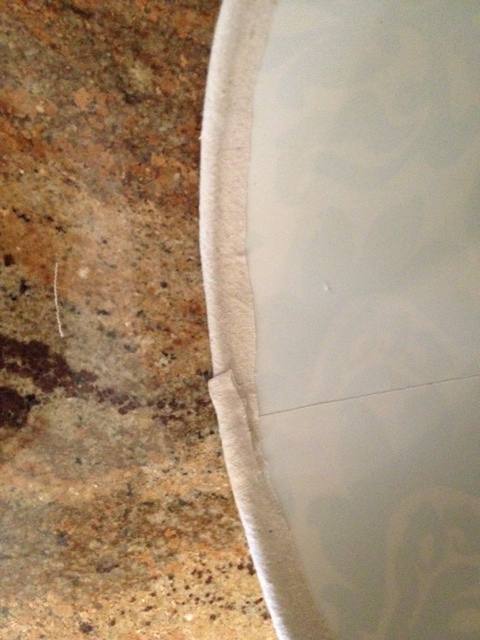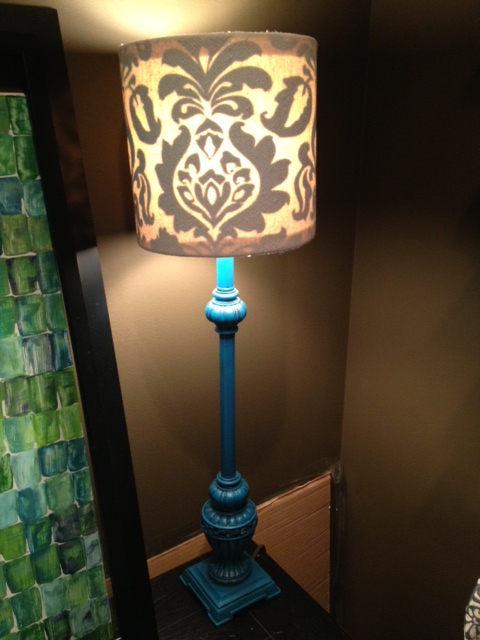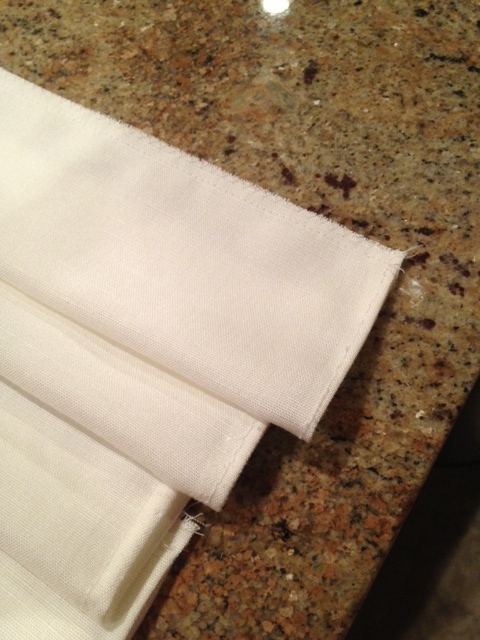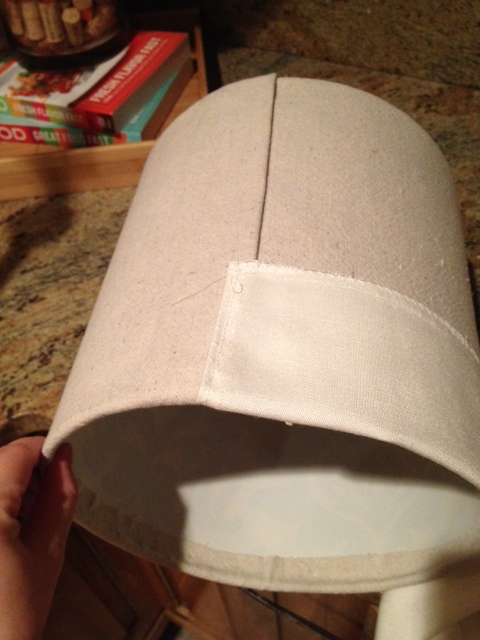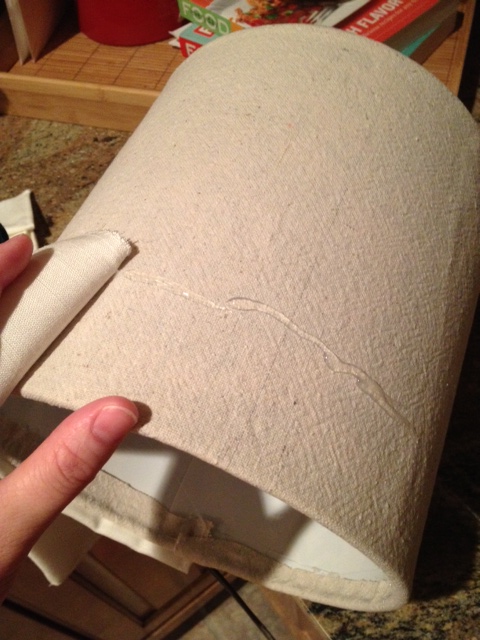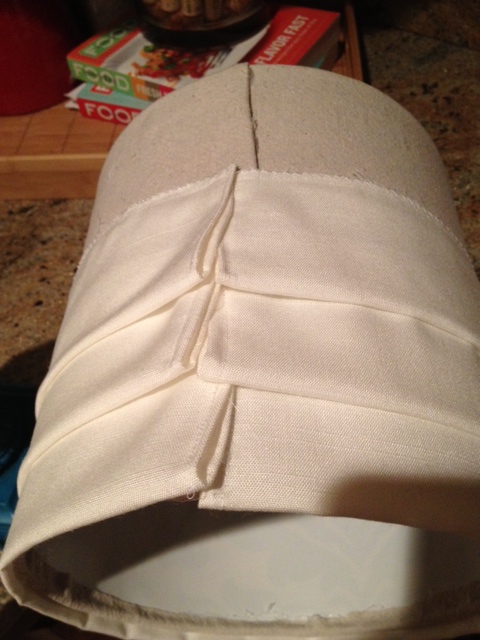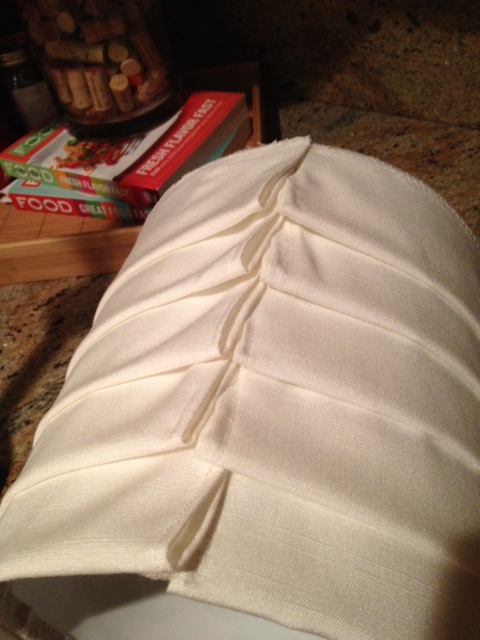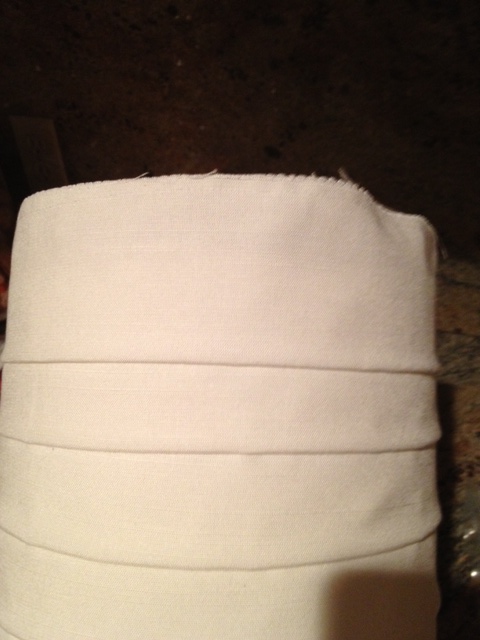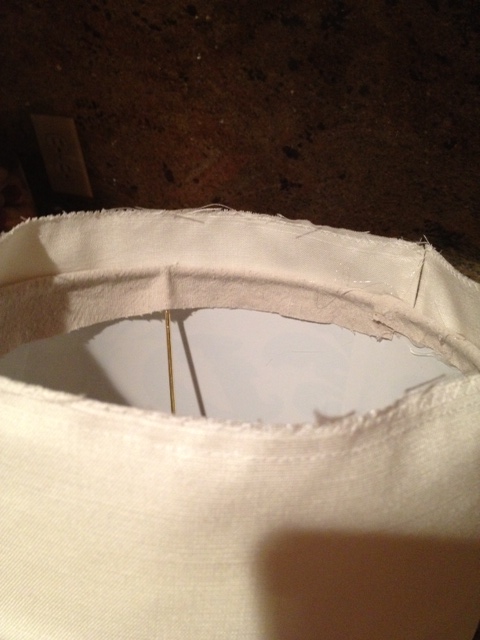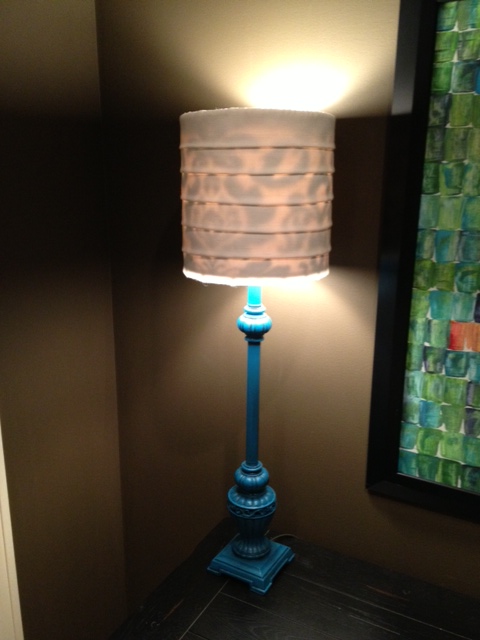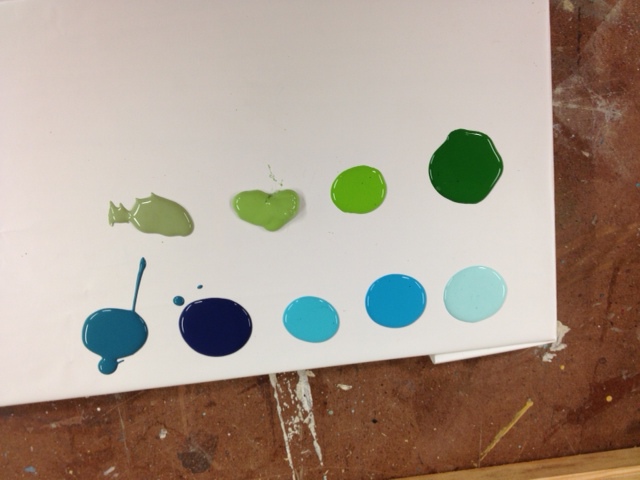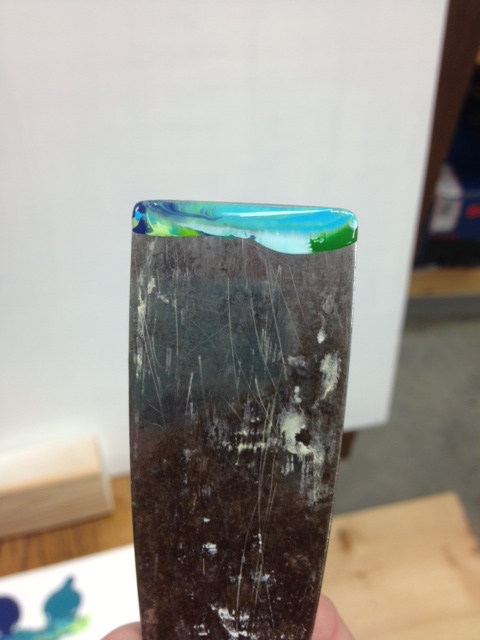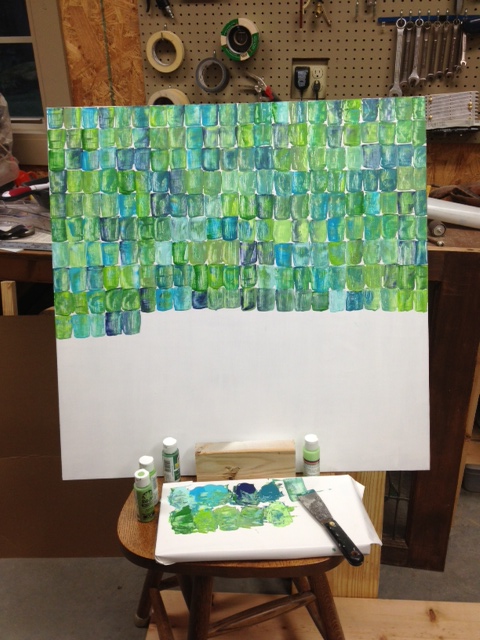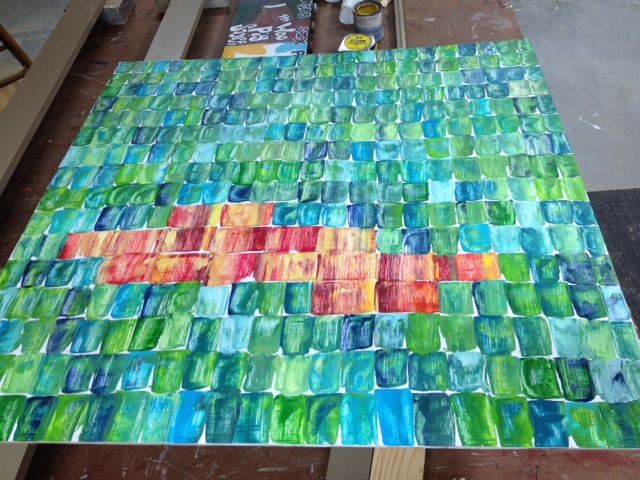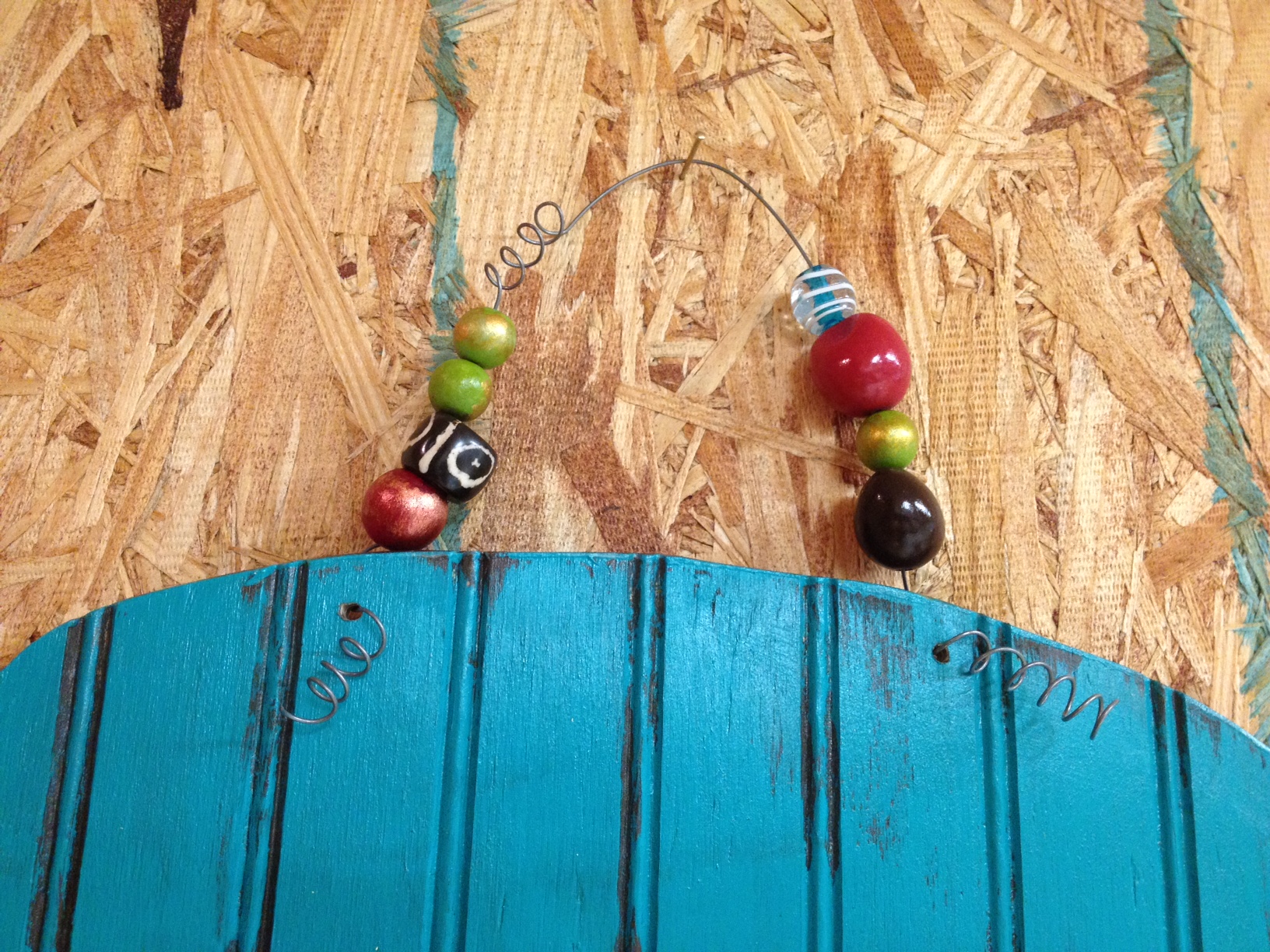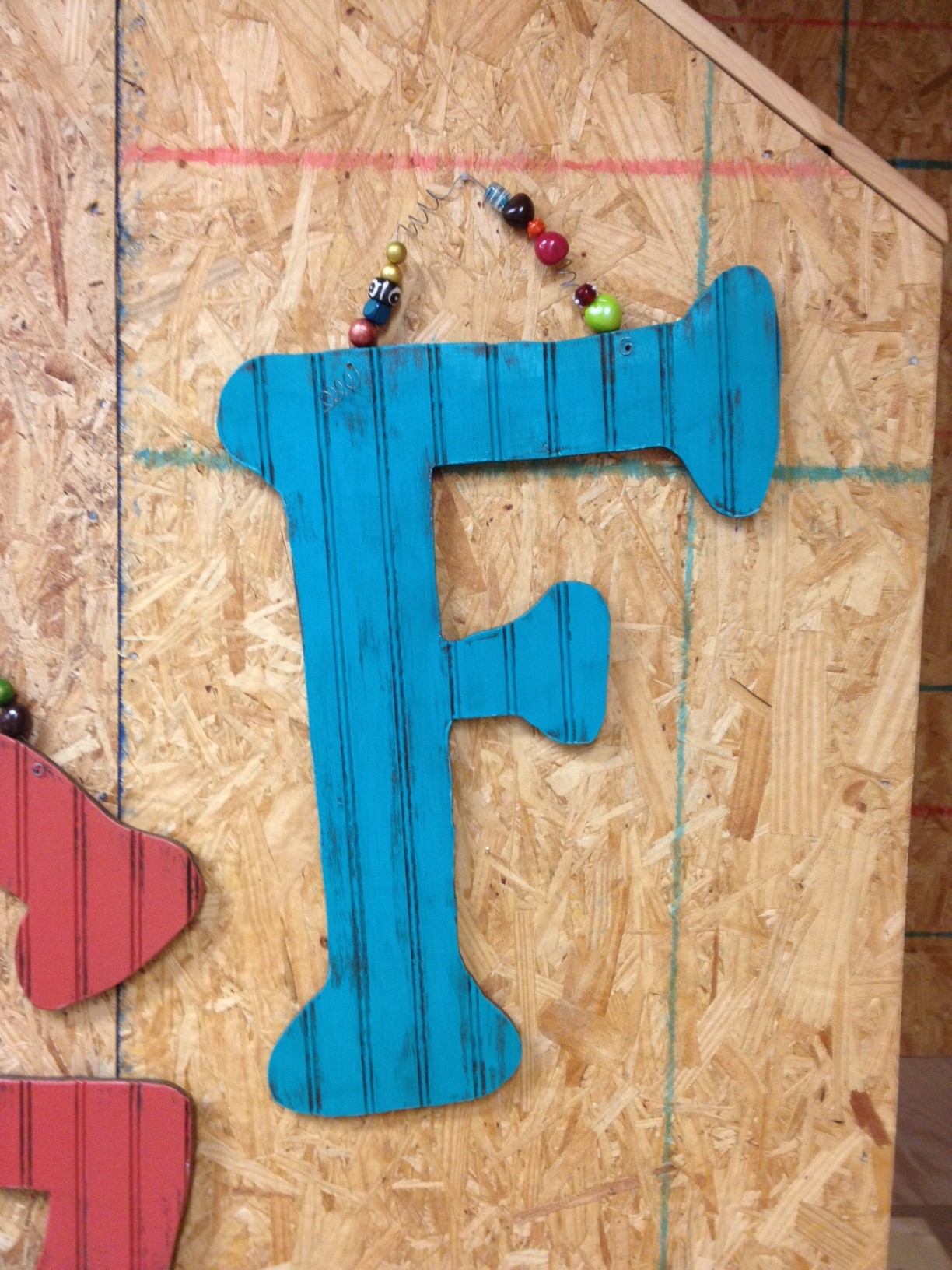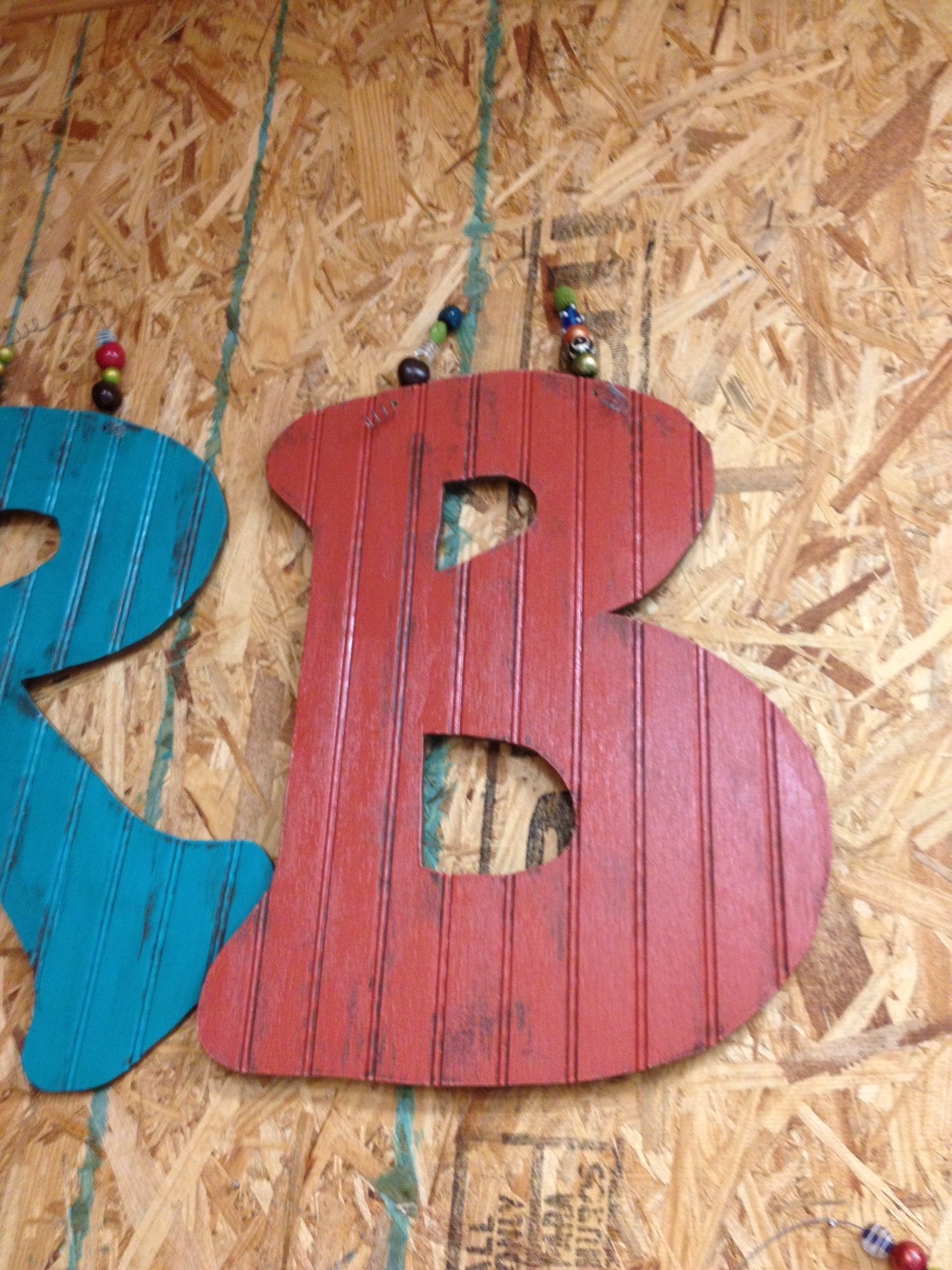Alternate title for this post: The Craft Project That Tried To Kill Me.
Seriously, I started this "simple" little craft project of making Family Birthday signs last spring. They were supposed to be Mother's Day gifts. Mother's Day came and went and they sat unfinished. I finally completed them sometime around August and I'm just now getting around to blogging about it. After finally finishing them, I just needed to step away for a while.
But now I'm ready to share them with you! And, in all honesty, now that I've completed three of them, they really aren't that hard at all. I just tried to make it really hard.
Before I start with the tutorial, let me make one thing clear: nothing about this is my own original idea. In fact, the whole idea was found via Pinterest right here. (I would post a picture of her Family Birthdays sign, but don't want to use it without permission.) I thought it looked really cute when I saw it on Pinterest, clicked over to her blog and read through her short and sweet list of steps, and figured I could knock out a couple of them as gifts in no time.
Ha. Hahaha.
I'm gonna show you everything I attempted, just so you don't try to get extra fancy and waste your time trying some of the ideas I tried. Now let's get started.
Step one is to cut a piece of 1x8 to roughly 2 feet long. No need to get extra picky on this length, just somewhere in that ballpark. If you have a router, feel free to fancy up the edge a little bit. I used an ogee bit and went around the edge for a little detail. Paint your plaque of wood any color you'd like - this will be the base of your Family Birthdays sign. Here is where I'd show you a picture of my painted plaques if I hadn't deleted it. D'oh!
This next step doesn't necessarily have to come next, but it makes it easier. Flip your plaque up on its side so that the bottom is up on top. Measure the length of your board so you can calculate your spacing...you'll want to divide by thirteen to come out with 12 marks, one for each month of the year. Here's the pic where I measured one of mine and lined another up with it to cheat and use the same marks. Hopefully this will make it make more sense.

Here's a helpful tip: use chalk to mark your lines. It shows up better than pencil and is much easier to wash off when you're done.
With your spacing marked, go ahead and drill holes using a tiny drill bit. You won't need to screw the eyehooks in until later, but this way you'll already have your holes made if your chalk lines get smudged away while you're working on the rest of it. Make the holes in the middle of the board so it doesn't split.
To put the writing on the plaque the way I did, you'll need access to a Silhouette machine, or something similar. I already had a roll of black adhesive vinyl that I planned on using for this project, but you could cut the letters out of paper and modpodge them on or even freehand them with paint.
If you'd like to follow along with my method, here's what I did. First, I downloaded the free font (Teeny Boppin FN) and laid out my letters on my computer. I'm self-taught when it comes to using the Silhouette, so I have no idea if I do this the correct way or not. I prefer to keep as many letters grouped together in one text box as I can while minimizing the amount of wasted vinyl at the same time. In the picture below, you can see that "Family" fit in one text box and "Birthda" fit in another, but I had to just squeeze in the Y and the S at the end.

I like to keep as many letters together as possible so that they spacing between them is correct and they're lined up the way they should be. For the Y and the S, I'll have to manually line them up on their own.
For those of you unfamiliar with a Silhouette machine, it looks a lot like a small home printer but instead of printing out your image, it uses a small blade to cut it out. Here it is being fed into the machine.

And here is the vinyl when it's finished cutting.

The vinyl comes stuck to a piece of white paper, which obviously makes it much easier to work with. I suppose you could start pulling off each letter one at a time and sticking them down, but I wanted to do them all at one time to keep my spacing and to keep them straight. To do that, the first step is to pull off all the background vinyl, leaving only the letters. Below, I've cut out the word Family and pulled off the background. (I had already stuck down the initials for each of the 12 months using the holes I drilled earlier for my spacing.)

When I initially purchased my adhesive vinyl, I also bought the recommended roll of...tape? I don't really know what it's called; to me, it resembles a big roll of masking tape that's just not as sticky. I pulled off a piece of it and stuck the word Family face down.

After pushing down the letters really well to make sure they've stuck down, you can pull off the white paper. Now the letters should be backwards and have the sticky side out.

Now, I have one more trick that I've learned before just sticking it down. I like to cut the tape off right below the letters, making a straight line at the bottom that I can use to line up on my sign. With the font I used, I had to skip over the A, but I still had plenty of straight bottom to use.

Now the letters are finally ready to be stuck down. I had already drawn a chalk line to line them up with - once you have the size of your letters figured out, just eyeball it to figure out the spacing.

Now, in my opinion, this is where things start getting a little bit tricky. In a perfect world, you would just be able to make sure the letters have been mashed down and then pull the masking tape backing off, leaving the letters perfectly stuck to the sign. Unfortunately, this world is far from perfect and it doesn't work that easily. The stickiness of the masking tape is stronger than the stickiness of the vinyl letters, so if you peel it back the letters usually stay on the tape instead of on the sign. Grr. I usually just peel up a small corner at a time and try to hold it down while peeling off the rest of the paper. It may defeat the purpose of doing this process in the first place, but the important part for me is that it helps keep the spacing between the letters.

With just a little bit of time and patience, they're eventually all stuck down and perfectly spaced.

After that I was able to stick down the bigger section of Birthday, but I still had to manually line up the Y and the S with the rest of the word.

After all the letters were stuck down, I still had one last step to do. Because the vinyl is not incredibly sticky and can be pulled up, I opted to brush on a layer of a clear polyurethane to kinda help seal them in. And with that, the sign part of this project was complete. That was the easy part!
For the wooden discs, I originally tried to take a large dowel rod and slice it into thin pieces. That didn't work well because I couldn't get them the same thickness. And let's face it, I really didn't want to have to sand all the slices either, so I was fine with that not working. Thankfully, I was able to find pre-cut wooden circles at Michael's. I believe they are about an inch and a half in diameter (give or take a little, it's been a while since I looked at them) and have a nice rounded edge. They came in packages of 12, I think.
Painting them was not hard at all, just more of a nuisance since they had to be painted on both sides. Because I wanted the discs of each family to be the same color, I had to do a little bit of prework and figure out how many of each color I needed. I was also working on three Birthday signs at one time so things got a little confusing!

And now we've reached the part where it all went downhill.
Here's why: I needed to somehow write the names and birthdate of each family member on the discs and the original sign that I was copying had handwritten discs. So I grabbed two different pens - one a regular sharpie and one a sharpie pen - and gave them a try. Holy kindergartener handwriting! They looked terrible! The thin pen was bumpy on the wood grain, and the fat pen bled too much and got to thick to read. Imagine if I tried to do a name longer than three letters!

I had come too far in this project to junk it up with some terrible writing, so I set out to figure out a way to print my names and birth dates using the same font from the sign. After doing some googling, I discovered that I could actually print the text on paper and then transfer them to the wooden discs using elmer's glue and mod podge. I followed these directions to a T.
The first thing I had to do was get all of my text laid out in a format that would be easy to use. Being an accountant, I consider myself to be pretty handy in excel, so I used it to set up a nice little grid. It's uber important to remember to print your text in reverse, or as a mirror image. I hadn't done that before so I had to click around a bit to find it...I think it's in the Print Setup options.
I got my file set up, painted my white card stock with Elmer's Glue like the directions said, and then printed my text onto the sheet.

After printing, I modpodged the discs facedown onto the print. According to the tutorial I read, all I had left to do was run the page under water until the disc lifted off, pulling the text off with it.
I got busy sticking the discs down, being careful to put the right colors on the right names.

I cut off the top one in the corner so I could go ahead and see if it was going to work. I was able to rinse the paper off and the text did transfer to the disc. Yay! The print was a little light and slightly spotty, though, so I carefully traced over it with the sharpie pen.

Admittedly it's not the most perfect looking thing in the world, but I liked that the font matched the main part of the sign and it sure as heck beat my kindergartener handwriting. Onward I went.
I'm not really sure how this went wrong, but after sticking all of the discs down and letting them soak in water for a fair amount of time, I got very splotchy results when I pulled them off. I got an average of about 2 full letters per name and some of them could've been salvaged, but not all of them. Whomp, whomp. Why did I glue down every one of them?? Now I had to start all over again...
I cleaned out the bags of wooden discs at the first Michael's I had gone to, so this time I had to go to a different location. Luckily they had just enough for me to try again. This time, after more researching, my plan was to use transfer paper to iron the text onto the discs.

From what I'd read, I pretty much just had to do the exact same thing you'd do if you were ironing a design on to a t-shirt. Seemed easy enough. Once again, I got all my text laid out and printed in reverse onto the transfer paper.

I grabbed a handful of painted wooden discs and headed to the ironing board. I placed the transfer paper print-side down and got to ironing. This was even worse than the other method! The discs were slightly cupped, not perfectly flat, so the transfer paper wasn't sticking to the middle. In fact, it was leaving a bubble in the middle of each disc. You could also see the clear plastic it was leaving. I guess I didn't take a picture but trust me, they had to be trashed too.
By this time, this project had already spanned a couple of weeks since I had to keep going and buying supplies and reprinting things. I was getting majorly bummed out and decided they would not be Mother's Day gifts afterall.
I had one more idea that I thought I would try - Transfer Artist Paper. For whatever reason, though, I pushed this project aside and gave up on it for a while. At some point I did order a bulk box of wooden discs since I had already ruined so many and Michael's apparently wasn't planning on restocking them any time soon.
Fast forward to the end of July when we were packing up our house to move and I ran across these things again. I decided rather than packing them up I might as well try to finish them up. And, of course, I'd never gotten around to ordering the Transfer Artist Paper and I didn't feel like waiting on it to arrive now, so I had to go on without it.
There was no choice left but to go back to my original method and just handwrite them on. Grr. I did make a few improvements, though. First, I added a layer of clear polyurethane to each of the painted discs (the third set of painted discs at this point, ugh). I also looked at every different kind of pen and marker that Michael's had before settling on one that had a good tip to use. It actually had two tips - a thin one and a fatter one - so surely one of them would work.
Thankfully, the pen worked much better and the coat of poly kept the ink from bleeding into the wood grain. Much better this time!
The last steps went pretty quickly. I screwed the eyehooks into the 12 holes I drilled at the very beginning. I also drilled tiny holes in each of the wooden discs. This required a little bit of planning because some discs needed holes at both the top and bottom and others just needed one at the top. I used jump rings to hang them from the eyehooks.
The finished product...finally!

The sign above is the one I made for our house. It has all of our birthdays on it, both of our sets of parents and living grandparents, and also our siblings and their spouses and children. Each family is in a matching color (for example, my oldest brother's family is all in green). With all the birthdays added, it just so happened that we only had one month with no birthdays in it...

(I see JASON every time I look at this...he's not even in our family!)
Thankfully, we were able to fill that little hole exactly one month ago!

And now our little sign of Family Birthdays is complete. :)

I told you I was working on three at one time, so here are the other two. I did one for my mom and one for Doc's mom and I tried to use colors that would work well in their houses.
This one is hanging in my mom's kitchen:

And this one is in my mother-in-law's kitchen:

So, here's the deal. When I started working on these three, I went ahead and cut out an extra piece of wood and routed the edges. I also cut out another set of letters out of the vinyl and I have leftover wooden discs. That means I have all the supplies for one more sign ready to go. Anyone want one to hang in their house? You can choose the color scheme and will, obviously, have to provide the names and birth dates, but I'll do all the rest! I suppose if you don't like my handwriting I can send the discs blank so you can write them yourself.
To enter for a chance to win a Family Birthdays sign, just leave a comment on this post. And to make it fun, why don't you tell me something that's on your Christmas wish list. I'd love to see what you guys are hoping for and heck, I might even get some shopping ideas! We'll be using the honor system here - please just one comment per person. I'll close the comments Thursday evening at 8:00pm and will use Random.org to choose the winner. Good luck!
